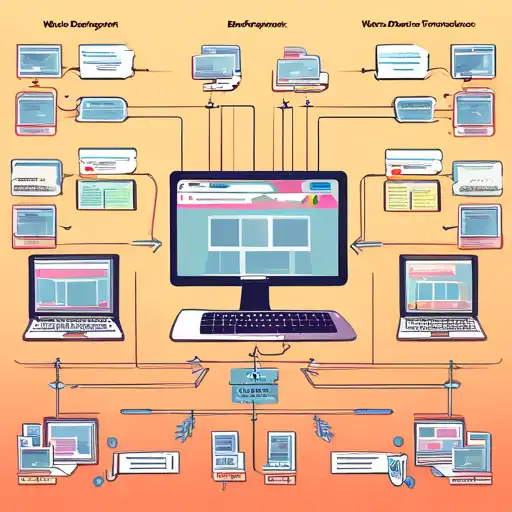Understanding Web Development Frameworks
In the ever-evolving world of web development, choosing the right framework is crucial for building efficient, scalable, and maintainable websites and applications. With a plethora of options available, developers often find themselves at a crossroads, trying to determine which framework best suits their project needs.
Frontend vs Backend Frameworks
Web development frameworks can broadly be categorized into frontend and backend frameworks. Frontend frameworks, such as React, Angular, and Vue.js, focus on the client side, enhancing user interface and experience. On the other hand, backend frameworks like Django, Ruby on Rails, and Express.js handle server-side operations, database interactions, and application logic.
Factors to Consider When Choosing a Framework
Selecting the right framework involves considering several factors:
- Project Requirements: The nature and requirements of your project play a pivotal role in framework selection. For instance, a single-page application might benefit from a frontend framework like React or Vue.js.
- Community and Support: A strong community and extensive documentation can significantly ease the development process, especially when encountering challenges.
- Performance: Evaluate the performance benchmarks of frameworks to ensure they meet your application's demands.
- Scalability: Consider whether the framework can accommodate your project's growth over time.
Popular Web Development Frameworks in 2023
Here's a look at some of the most popular web development frameworks this year:
- React: Known for its virtual DOM feature, React is ideal for building dynamic user interfaces.
- Angular: A comprehensive framework that offers a wide range of features out of the box, suitable for enterprise-level applications.
- Vue.js: Praised for its simplicity and flexibility, Vue.js is a great choice for both small and large projects.
- Django: A high-level Python framework that encourages rapid development and clean, pragmatic design.
- Ruby on Rails: Favored for its convention over configuration approach, making it a hit among startups.
Conclusion
Choosing the right web development framework is a decision that should not be taken lightly. It requires a thorough understanding of your project's needs, the strengths and weaknesses of each framework, and the long-term implications of your choice. By carefully considering these factors, you can select a framework that not only meets your current requirements but also supports your project's future growth.
Remember, the best framework is the one that aligns with your project goals, team expertise, and future scalability needs. Happy coding!
